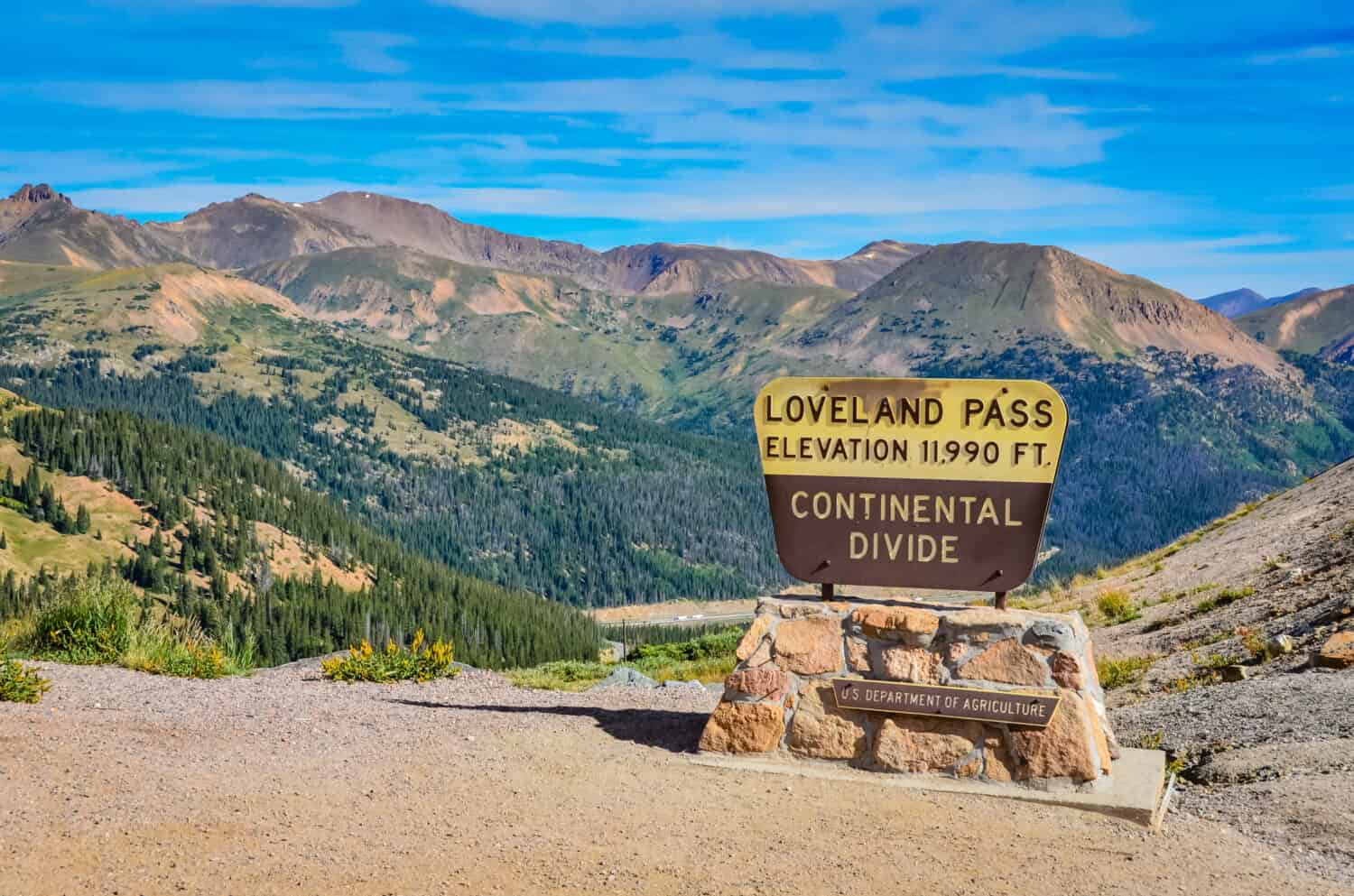Although Colorado may be known for its incredible views of mountains in just about every direction. A myriad of animals call Colorado home as well, including snakes. We’ve done the research to find the three most snake-infested lakes in this state!
Take a moment to read what slithering serpents may be near the water before you enter!

Water Snakes Found in Colorado
Northern watersnakes prefer the slow-moving or still water in lagoons, lakes, seasonal pools, marshes, and slowly flowing rivers and streams. You can frequently spot them in or close to the water, sunbathing on boulders or logs.
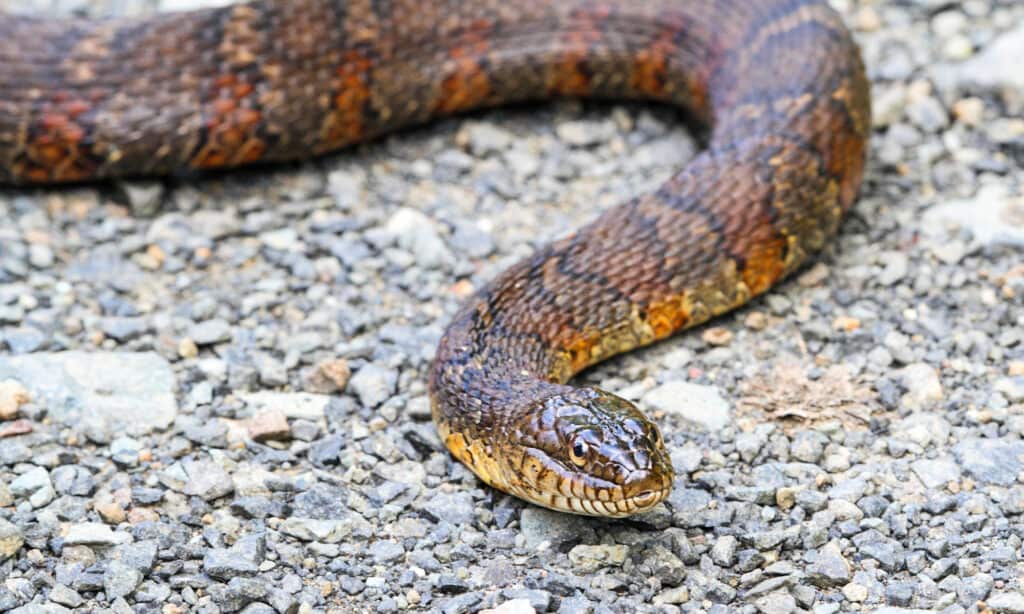
Northern watersnakes are one of the most widespread watersnakes in North America.
©Steve Byland/Shutterstock.com
Eastern Colorado is home to this water snake. Older, larger individuals seem almost completely black or dark brown. Northern Watersnakes dive into the water in order to flee when startled.
The prairies in eastern Colorado, meadows, and grasslands close to freshwater sources are virtually always where one can find garter snakes. They have a big population and are able to thrive in environments that people have altered.
These snakes love hiding in piles of trash, empty acreage, or housing structures. One of the snake species that tolerate freezing temperatures the best is this one! On milder winter days, they may even emerge from hibernation.
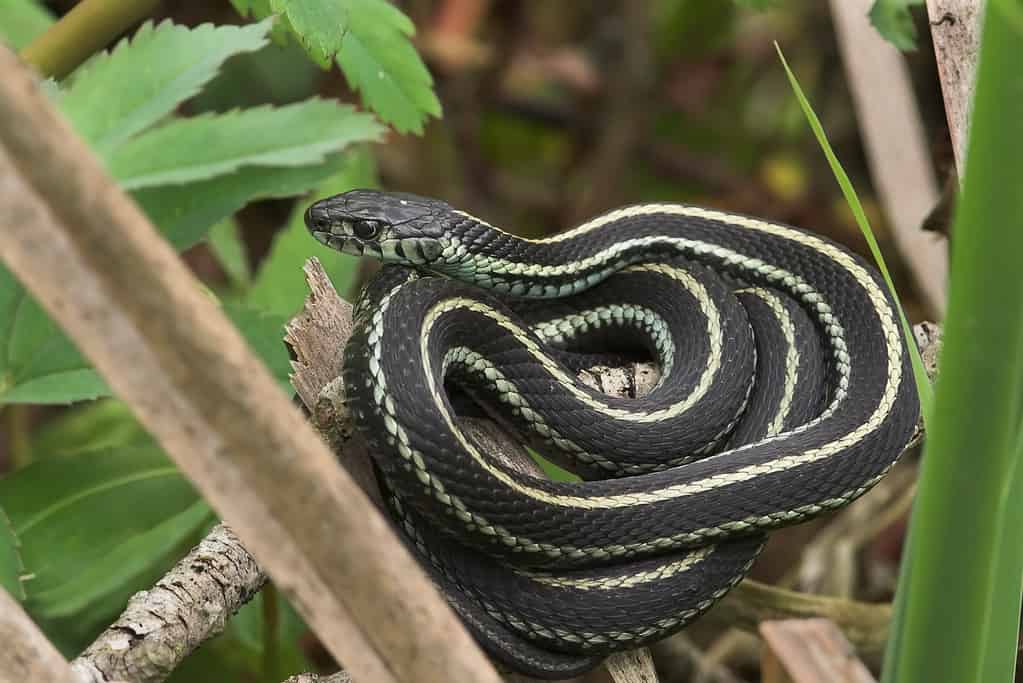
©iStock.com/rkhalil
Black-necked Garter snakes live in Colorado throughout numerous ecosystems, particularly fields dry grasslands, and pine-oak forests. They are frequently hanging out by bodies of water like streams, ciénegas, and livestock tanks.
Out of the two types of black-necked garter snakes, you’ll only find the Western Black-necked Garter Snake in Colorado. Red stripe ribbon snakes can grow to nearly two and a half feet long. They have thin and lengthy bodies. The dorsal stripe is vivid red, while both of the lateral bands are both yellow.
In Colorado, red-striped ribbon snakes prefer living near the margins of marshes, streams, wetlands, and lakes. They are swift snakes that, when threatened, dive into the water.
3 Most Snake-Infested Lakes in Colorado
Not every lake in this beautiful state has slithering serpents. Here are the three lakes you may want to avoid if you have a fear of snakes!
1. Lake Pueblo
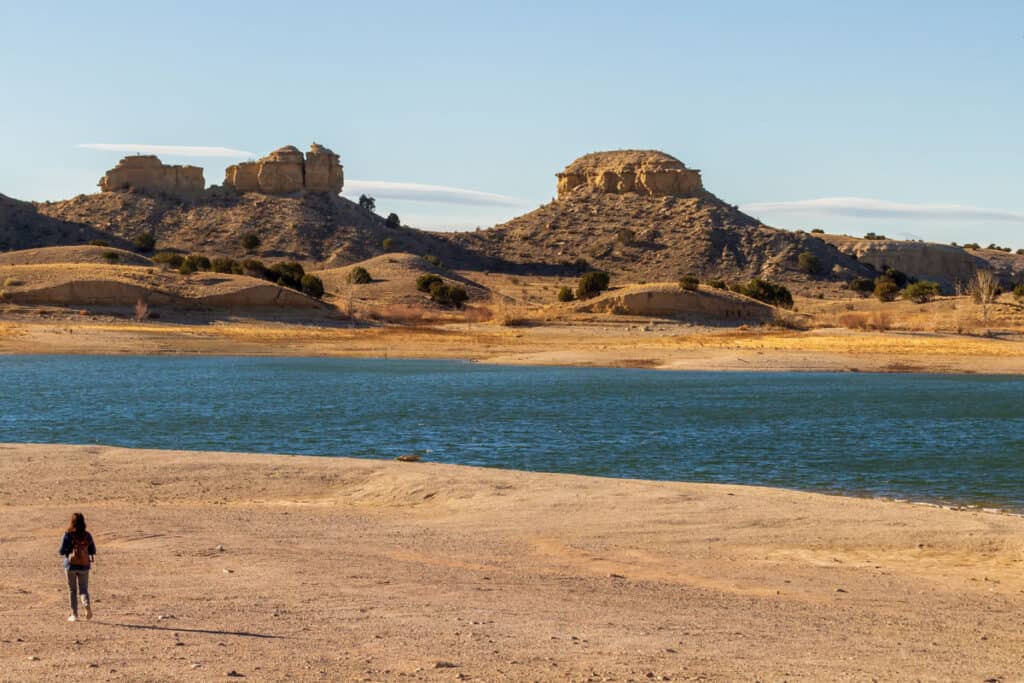
Lake Pueblo State Park offers a wide range of activities for outdoor enthusiasts.
©iStock.com/Faina Gurevich
Visitors to Lake Pueblo frequently inquire whether they have seen a pink snake. There’s no need to take off your glasses; a pink snake can be present at Lake Pueblo. Although they are Coachwhips, residents nickname them Red Racers.
It’s noteworthy to note that this snake only appears pink in the southeast region of Colorado; elsewhere, it is tan or olive in hue. The coachwhip is one of the longest snakes, growing to a length of between five and six feet as an adult.
On the cliffs or by the roadside, they can be observed enjoying the sun. They resemble whip snakes and racers and are remarkably similar to both of them. The term “Red Racer” likely refers to their high level of activity and speed.
2. Boyd Lake
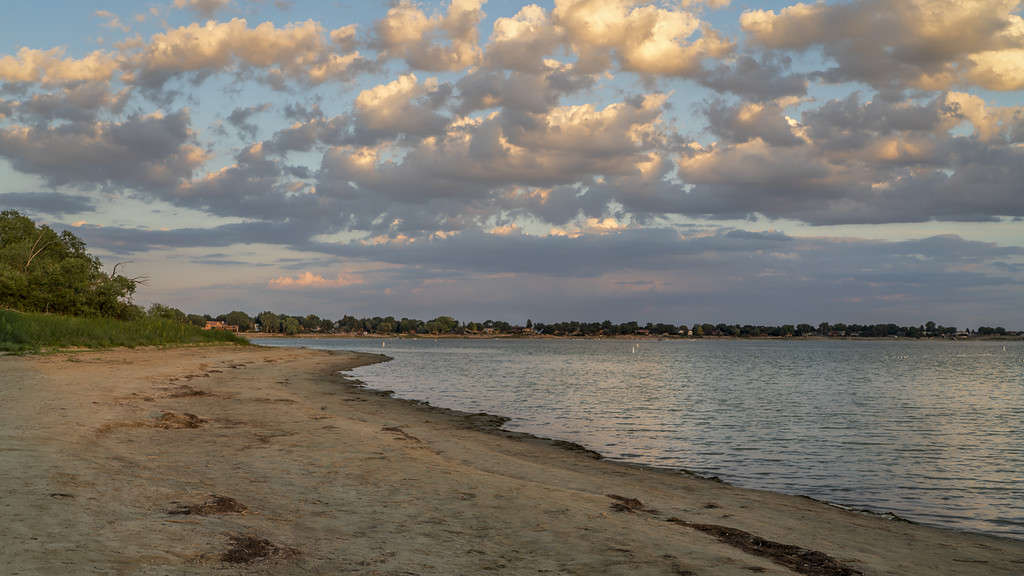
Garter snakes can be found around Boyd Lake.
©iStock.com/marekuliasz
Located in Loveland, CO, Boyd Lake is a beloved summer destination. Locals enjoy boating, fishing, and just relaxing in the soft sand. Garter snakes can be spotted in the area as well. They normally live on the ground, but to avoid predators, they can additionally climb bushes, vines, or trees.
Garter snake species vary in their swimming abilities, but won’t hesitate to escape from a predator by slithering onto the water. In the summer of 2021, a large bull snake was found on Boyd Lake.
Bull snakes frequently lower their heads, hiss loudly, and vibrate their tails to mimic rattlesnakes. Thankfully, they’re completely harmless — unless you happen to be a gopher..
3. Electra Lake
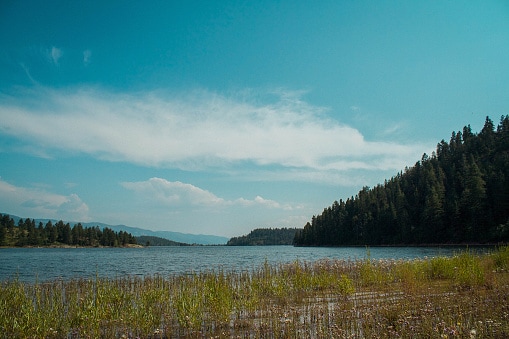
Electra Lake is a private reservoir that is home to blackneck garter snakes.
©claireraeann/iStock via Getty Images
In La Plata County, Colorado, approximately 23 miles north of Durango, there is a privately owned artificial reservoir called Electra Lake. Electra Lake has a surface area of about 1,100 acres when it is full.
Every year, on the Saturday before Labor Day, Electra Lake welcomes visitors for the season. Sometimes, this includes blackneck garter snakes. This species of garter snake is known to live near bodies of water since they usually thrive on food.
Summary of the Most Snake-Infested Lakes in Colorado
| Lake Name | County | Types of Snakes | |
|---|---|---|---|
| 1 | Lake Pueblo | Pueblo County | Red racer/coachwhips |
| 2 | Boyd Lake | Larimer County | Garter snakes and bull snakes |
| 3 | Electra Lake | La Plata County | Black neck garter snakes |
Other Animals Found Near Lakes in Colorado
Aquatic habitats are necessary for all of Colorado’s fish species, including the mountain sucker and cutthroat trout, but these natural systems also, provide support for a number of different animal species.
These environments are home to river otters, white pelicans, and leopard frogs. Bald eagles, moose, and little brown bats are some animals that depend on water habitats. Large animals such as bison, bighorn sheep, and mountain lions live near the waters of Colorado.
Thank you for reading! Have some feedback for us? Contact the AZ Animals editorial team.

